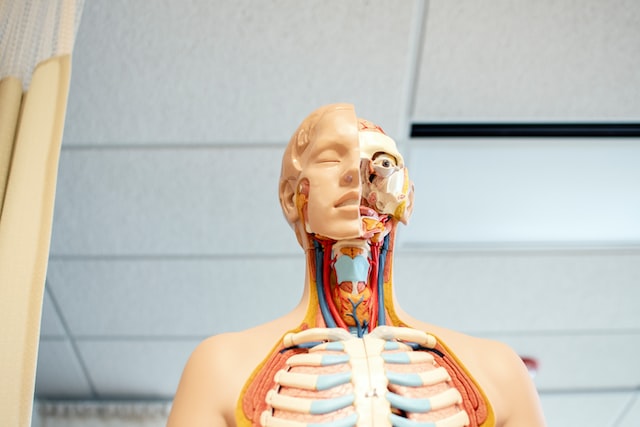How to study biochem in med school & do well
I recently completed 5 weeks of the DM (digestion and metabolism) module and did extremely well. The last time I got this score was during the MSK block aka my COVID exam. You can read about those fun times in how I survived a med school exam with COVID. Luckily, this time I was completely healthy. The DM exam was heavy on biochemistry, which I felt really comfortable with. So I thought I’d share some tips on how to study biochem in med school – and ace it.
Know the biochem pathways, pay attention to irreversible steps
There are many biochem pathways that you have to learn in med school. However, I’m only going to reference glycolysis and gluconeogenesis for now. They’re opposing processes and usually the most tested. And you’ll have some familiarity from high school or undergrad which makes it easier to follow along.
When I say know the biochem pathways, I don’t mean that you should memorize every single step. But, you need to be able to recognize which steps belong to which pathway. Just knowing that can help you eliminate several incorrect answer choices on a test.
After that, it’s important to focus on any irreversible steps. Many steps in glycolysis are reversible so the same enzymes are used in gluconeogenesis, the reverse pathway to glycolysis. However, there are 3 irreversible steps in glycolysis. This means gluconeogenesis requires different enzymes for those reactions to take place. In fact, for one particular step, gluconeogenesis requires 2 enzymes to convert pyruvate back to phosphoenolpyruvate (PEP). Whereas glycolysis only needed 1 enzyme to convert PEP to pyruvate.
Paying attention to these types of details allows you to compare and contrast opposing pathways. In turn, you have a better understanding of the pathways (rather than just memorizing) and can do better on exams.
Know the rate-limiting enzymes, their co-factors and regulation
When learning how to study biochem, there’s usually an emphasis on understanding the rate-limiting enzyme. And it makes sense. When things go wrong with the rate-limiting enzyme, it has a profound impact on the pathway, often leading to disease. So in-school and board exams tend to focus on the rate-limiting enzymes.
It’s important to know if the rate-limiting enzyme has co-factors and how the enzyme is regulated. If there are any deficiencies in the co-factors, or issues with regulation, this can also lead to disease.
Know the intracellular signalling pathways for insulin and glucagon
The primary hormones in digestion and metabolism are insulin and glucagon. They are opposing hormones. While insulin stimulates glycolysis, it inhibits gluconeogenesis. While glucagon stimulates gluconeogenesis, it also inhibits glycolsis. They also have opposing actions in other pathways. If you know their intracellular signalling mechanisms, you’ll know if the enzymes they regulate are phosphorylated or de-phosphorylated when activated.
Let’s analyze insulin. Of course, insulin has many functions. So this is a simplified look at one of its intracellular pathways.
Insulin binds to a Receptor Tyrosine Kinase. At the end of it’s intracellular signalling cascade, there is activation of phosphatase enzymes, which de-phosphorylate molecules. So ultimately, insulin binding leads to de-phosphorylation of target enzymes.
This means that enzymes belonging to pathways that are activated by insulin will be active when they’re de-phosphorylated. For example, insulin up-regulates glycolysis by stimulating Phosphofructokinase-2 (PFK-2). This enzyme is active when it’s de-phosphorylated (due to insulin) and inactive when it’s phosphorylated.
This makes even more sense if you know the intracellular signalling pathway for glucagon. Glucagon binding leads to activation of Protein Kinase A, so ultimately, there’s phosphorylation of target enzymes. Glucagon is released when blood glucose levels are low, in which case you wouldn’t want glycolysis to occur. So it makes sense that high levels of glucagon leads to phosphorylation and inactivation of PFK-2 so glycolysis can’t occur. At the same time, glucagon causes phosphorylation of another enzyme, fructose-2,6-bisphosphatase (F26BP). This enzyme is activated and allows gluconeogenesis to occur so the liver can make glucose and raise blood glucose levels to normal.
Understand the big picture – it will help with details
When trying to study biochem, it helps to remember that the body likes to maintain homeostasis. If you know that along with the functions of the major metabolic hormones, it becomes easier to synthesize ideas and remember a lot of the details.
For example, what is the purpose of insulin? To lower blood glucose back to physiological range.
When does the body release insulin? When blood glucose levels are high.
And when are blood glucose levels high? About an hour after a meal (fed state).
What are some ways that insulin tries to lower blood glucose? It stimulates muscle and fat tissue to to take up more glucose from the blood. It also stimulates enzymes involved in glycolysis (and other pathways). Glycolysis uses up glucose and therefore, helps bring blood glucose levels back down.
What other processes occur in the fed state? How does Insulin contribute to these processes? These questions help to synthesize all the actions of insulin that take place after a meal. Thinking this way ties together a lot of the other biochem pathways like fatty acid synthesis and lipolysis/beta-oxidation, ketogenesis, etc. Nothing happens in the body in isolation. So it’s important to know how various pathways are connected. And when you analyze it like this, you’ll notice that all the actions of insulin will tie back to its overall function, which is to lower blood glucose.
How do you study biochem?
So those are some of my tips on how to study biochem effectively in medical school.
What has your experience been like with biochem? Do you like/dislike it?
-M
Want updates on the latest posts? Email theislandmedonline@gmail.com or complete this form to join the email list today!








Great article!